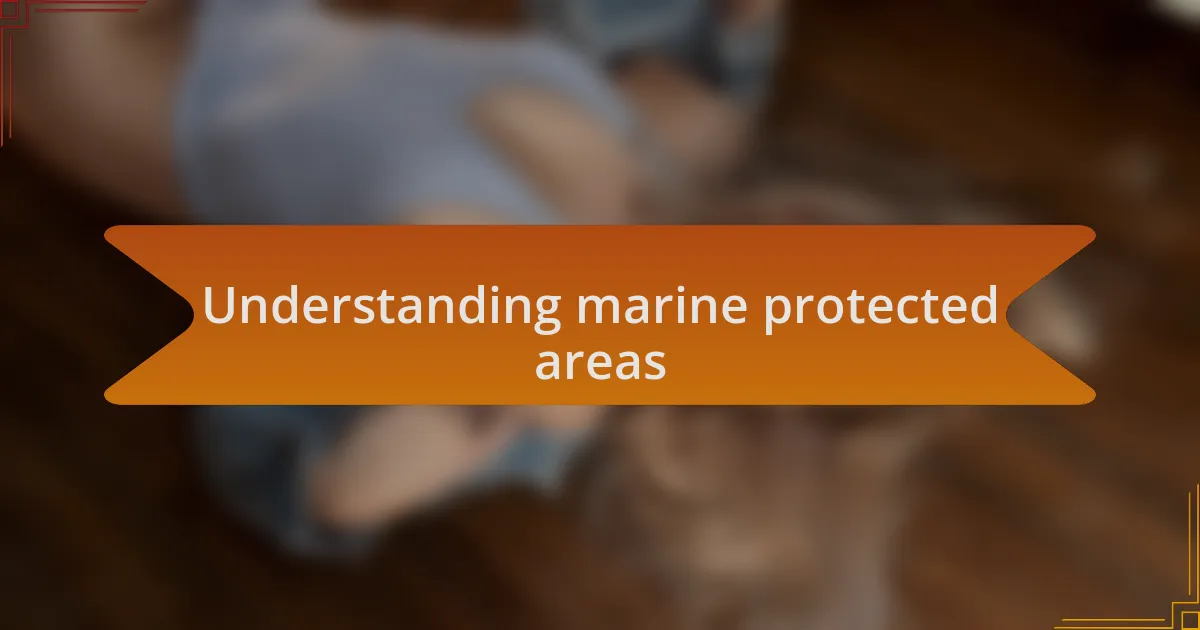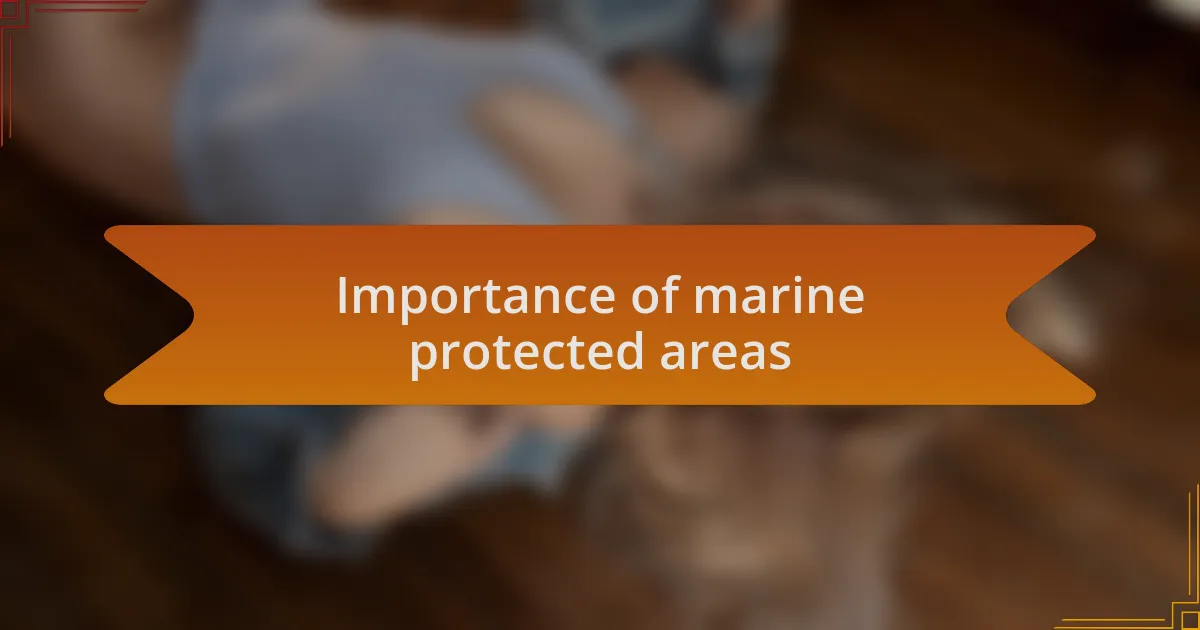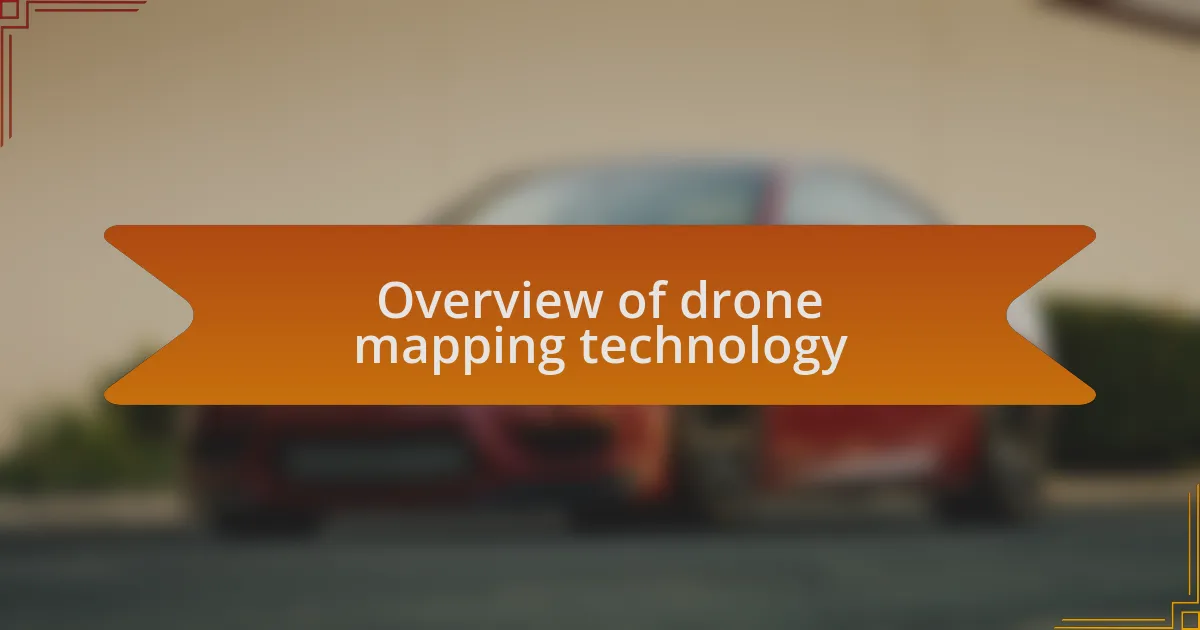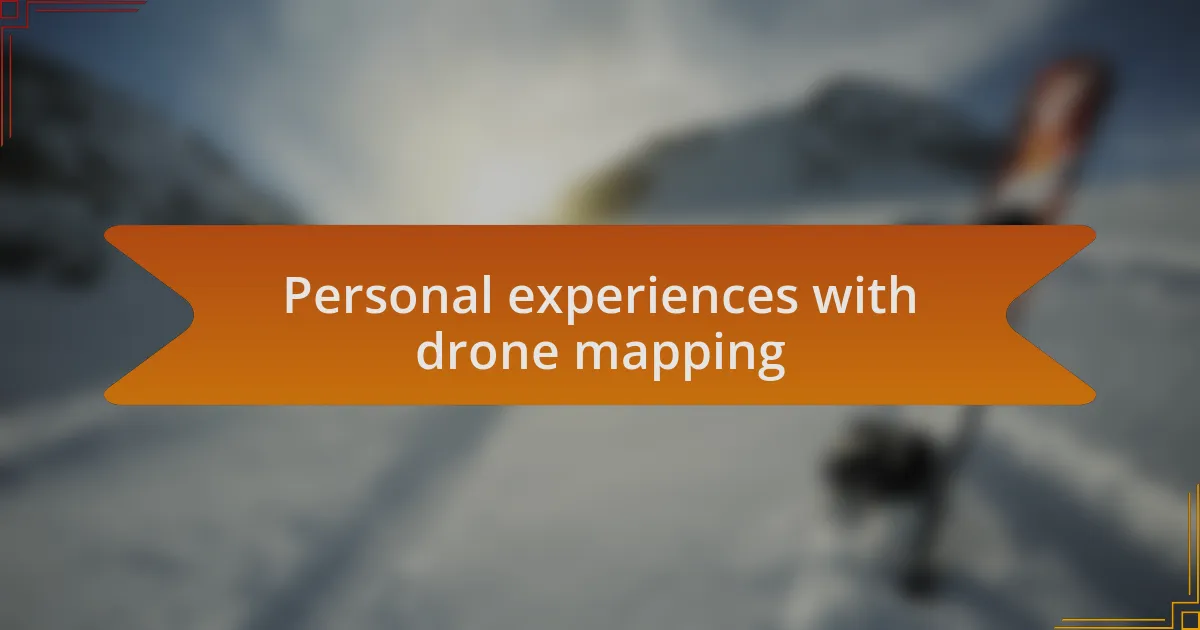Key takeaways:
- Marine Protected Areas (MPAs) are essential for conserving marine ecosystems and biodiversity while also benefiting local communities economically.
- Community involvement is crucial for the success of MPAs, fostering collaboration between stakeholders to protect the environment while sustaining livelihoods.
- Drone mapping technology enhances the understanding of marine environments by providing high-resolution data and empowering local communities in conservation efforts.
- Personal experiences highlight the transformative potential of drone mapping in revealing hidden insights and fostering connections between technology and traditional practices in fishing communities.

Understanding marine protected areas
Marine protected areas (MPAs) are designated zones in oceans and seas aimed at conserving marine ecosystems and biodiversity. I remember visiting a coastal village where the local fishers spoke passionately about the changes they’ve seen since an MPA was established nearby. It made me consider: how can we truly measure the positive impact of these protected areas on the community and the environment?
In my experience, the effectiveness of MPAs often hinges on community involvement. I once joined a workshop where local stakeholders collaborated on conservation strategies. Witnessing their commitment to both protecting the environment and sustaining their livelihoods left me pondering: can this model of collaboration be the key to successful marine conservation?
One of the most compelling aspects of MPAs is their role in fostering biodiversity. I vividly recall snorkeling near a protected reef, surrounded by vibrant coral and an abundance of fish—an experience that reminded me of the beauty that conservation efforts can preserve. How do we balance the need for human activity with the imperative to protect these vital ecosystems? This is the ongoing challenge that we must face together.

Importance of marine protected areas
To me, marine protected areas serve as critical safeguards for our oceans. I’ve seen firsthand how these zones can rejuvenate tired ecosystems. When I revisited a mangrove area that was designated as an MPA, the difference was striking; once sparse, the fish populations thrived, and so did the local flora.
The value of MPAs extends beyond environmental health; they bolster local economies too. I once spoke with a dive shop owner who noted how the nearby protected area attracted more tourists eager to experience the rich marine life. Isn’t it fascinating how conservation can become a catalyst for economic opportunity, transforming both the sea and the livelihoods of those who depend on it?
Moreover, MPAs provide essential research opportunities. During a visit to a research center, I watched scientists studying the impact of fishing regulations within an MPA, which left me appreciating the complex relationships between species. How often do we consider that these protected areas are not just spaces to keep fish safe but laboratories for understanding marine ecosystems better?

Overview of drone mapping technology
Drone mapping technology has revolutionized how we collect data about the marine environment. I’ve experienced the thrill of watching a drone fly over coral reefs, capturing high-resolution images that allow researchers to analyze intricate details of underwater ecosystems. What amazed me the most was the incredible precision with which these drones can map out not just the topography but also the health of coral and fish populations.
As I delved into the capabilities of drone mapping, I recognized its potential for monitoring changes over time. I recall an instance when researchers employed this technology to track the recovery of seagrass beds following protection measures. It was astonishing to see how data collected from the sky could provide insights that ground surveys simply couldn’t match. Isn’t it remarkable how technology can enhance our understanding of the underwater world?
Moreover, the accessibility of drone mapping is noteworthy. I’ve seen local communities wield this technology to document the health of their coastal waters, allowing them to engage directly in conservation efforts. Imagine the sense of empowerment when a community member sees their familiar fishing grounds through the eyes of a drone, enabling them to advocate for stronger protections. This technology is not just for scientists; it’s a tool for everyone who cares about the ocean.

Personal experiences with drone mapping
While working with drone mapping, I remember one particular day that was a mix of excitement and nervousness. Hovering above the vibrant landscape of Zanzibar, I felt a surge of anticipation as the drone captured breathtaking images of the coastline. It dawned on me—this wasn’t just about taking pretty pictures; it was about uncovering hidden patterns and stories within our marine environments that we often overlook.
A few months ago, I had the chance to collaborate with a group of marine biologists in an effort to monitor nesting sites of endangered sea turtles. Watching the drone glide over the sandy beaches, I couldn’t help but feel a swell of hope. This technology facilitated our research in ways I never imagined possible, offering us a bird’s-eye view that revealed crucial nesting behaviors. It made me wonder—how many other vital insights remain hidden beneath the surface, waiting for the right tools to bring them to light?
On another occasion, I visited a local fishermen’s cooperative eager to learn how drone mapping could aid their practices. As I demonstrated the drone’s capabilities, I was struck by their enthusiastic reactions. They began sharing stories of their generational fishing traditions, realizing that this innovative tool could help safeguard their livelihoods. In that moment, a sense of connection blossomed between the technology and the community, illustrating just how transformative drone mapping could be in bridging the gap between innovation and tradition.